史上最详Android版kotlin协程入门进阶实战
Posted 网易在职程序猿
tags:
篇首语:本文由小常识网(cha138.com)小编为大家整理,主要介绍了史上最详Android版kotlin协程入门进阶实战相关的知识,希望对你有一定的参考价值。
kotlin协程的异常处理
在上一篇中我们提到这节将会讲解协程的异常处理,但是笔者在写这篇文章的时候遇到了些问题,主要是讲解的深度怎么去把控,因为要处理异常,首先得知道异常是如何产生,那么必然就涉及到协程创建->启动->执行->调度->恢复->完成(取消)流程。这其中每一步都能罗列出一堆需要讲解东西,所以笔者最终决定,我们在这章节中只查看关键点位置,其中涉及到的一些跳出关键点的位置,我们只做一个基本提点,不做延伸。
当然基于前两篇文章的反馈,有读者提到文章文字和代码信息太多,从头到尾看下来很累,想让笔者中间安排一些骚图缓解下紧张的学习气氛。

所以笔者在这篇文章中尝试加入一些元素,如果有不合适的地方,麻烦批评指正。
协程异常的产生流程
我们在开发android应用时,出现未捕获的异常就会导致程序退出。同样的协程出现未捕获异常,也会导致应用退出。我们要处理异常,那就得先看看协程中的异常产生的流程是什么样的,协程中出现未捕获的异常时会出现哪些信息,如下:
private fun testCoroutineExceptionHandler(){
GlobalScope.launch {
val job = launch {
Log.d("${Thread.currentThread().name}", " 抛出未捕获异常")
throw NullPointerException("异常测试")
}
job.join()
Log.d("${Thread.currentThread().name}", "end")
}
}
我们抛出了一个NullPointerException异常但没有去捕获,所以会导致了应用崩溃退出。
D/DefaultDispatcher-worker-2: 抛出未捕获异常
E/AndroidRuntime: FATAL EXCEPTION: DefaultDispatcher-worker-1
Process: com.carman.kotlin.coroutine, PID: 22734
java.lang.NullPointerException: 异常测试
at com.carman.kotlin.coroutine.MainActivity$testException$1$job$1.invokeSuspend(MainActivity.kt:251)
at kotlin.coroutines.jvm.internal.BaseContinuationImpl.resumeWith(ContinuationImpl.kt:33)
at kotlinx.coroutines.DispatchedTask.run(DispatchedTask.kt:106)
at kotlinx.coroutines.scheduling.CoroutineScheduler.runSafely(CoroutineScheduler.kt:571)
at kotlinx.coroutines.scheduling.CoroutineScheduler$Worker.executeTask(CoroutineScheduler.kt:750)
at kotlinx.coroutines.scheduling.CoroutineScheduler$Worker.runWorker(CoroutineScheduler.kt:678)
at kotlinx.coroutines.scheduling.CoroutineScheduler$Worker.run(CoroutineScheduler.kt:665)
我们看到这个异常是在在CoroutineScheduler中产生的,虽然我们不知道CoroutineScheduler是个什么东西。但是我们可以从日志上运行的方法名称先大概的分析一下流程:
它先是创建一个CoroutineScheduler的一个Worker对象,接着运行Worker对象的run方法,然后runWorker方法调用了executeTask,紧接着又在executeTask里面执行了runSafely,再接着通过runSafely运行了DispatchedTask的run方法,最后DispatchedTask.run调用了continuation的resumeWith方法,resumeWith方法中在执行invokeSuspend的时候抛出了异常。
再来个通熟一点的,你们应该就能猜出大概意思来。雇主先是找包工头CoroutineScheduler要了一个工人Worker,然后给这个工人安排了一个搬砖任务DispatchedTask,同时告诉这个工人他要安全runSafely的搬砖,然后雇主就让工人Worker开始工作runWorker,工人Worker就开始执行executeTask雇主吩咐的任务DispatchedTask,最后通过resumeWith来执行invokeSuspend的时候告诉雇主出现了问题(抛出了异常).

别着急,仔细想一想,有没有发现这个跟ThreadPoolExecutor线程池和Thread线程的运行很像。包工头就像是ThreadPoolExecutor线程池,工人就是Thread线程。
我们通过线程池(CoroutineScheduler)创建了一个Thread线程(Worker),然后开始执行线程(runWorker),线程里面通过executeTask执行一个任务DispatchedTask,在执行任务的时候我们通过try..catch来保证任务安全执行runSafely,然后在DispatchedTask执行任务的时候,因为运行出现异常,所以在catch中通过resumeWith来告知结果线程出问题了。咦,逻辑好像突然变得清晰很多。

这么看的话,这个协程异常的产生是不是基本原理就出来了。那么我们接下里看看是不是正如我们所想的,我们先找到CoroutineScheduler看看他的实现:
internal class CoroutineScheduler(...) : Executor, Closeable {
@JvmField
val globalBlockingQueue = GlobalQueue()
fun runSafely(task: Task) {
try {
task.run()
} catch (e: Throwable) {
val thread = Thread.currentThread()
thread.uncaughtExceptionHandler.uncaughtException(thread, e)
} finally {
unTrackTask()
}
}
//省略...
internal inner class Worker private constructor() : Thread() {
override fun run() = runWorker()
private fun runWorker() {
var rescanned = false
while (!isTerminated && state != WorkerState.TERMINATED) {
val task = findTask(mayHaveLocalTasks)
if (task != null) {
rescanned = false
minDelayUntilStealableTaskNs = 0L
executeTask(task)
continue
} else {
mayHaveLocalTasks = false
}
//省略...
continue
}
}
private fun executeTask(task: Task) {
//省略...
runSafely(task)
//省略...
}
fun findTask(scanLocalQueue: Boolean): Task? {
if (tryAcquireCpuPermit()) return findAnyTask(scanLocalQueue)
val task = if (scanLocalQueue) {
localQueue.poll() ?: globalBlockingQueue.removeFirstOrNull()
} else {
globalBlockingQueue.removeFirstOrNull()
}
return task ?: trySteal(blockingOnly = true)
}
//省略...
}
//省略...
}
哎呀呀,不得了,跟我们上面想的一模一样。CoroutineScheduler继承Executor,Worker继承Thread,同时runWorker也是线程的run方法。在runWorker执行了executeTask(task),接着在executeTask调用中runSafely(task),然后我们看到runSafely使用try..catch了这个task任务的执行,最后在catch中抛出了未捕获的异常。那么很明显这个task肯定就是我们的DispatchedTask,那就到这里结束了么
很明显并没有,我们看到catch中抛出的是个线程的uncaughtExceptionHandler,这个我们就很熟了,在Android开发中都是通过这个崩溃信息。但是这个明显不是我们这次的目标。 
继续往下分析,我们看看这个task到底是不是DispatchedTask。回到executeTask(task)的调用出,我们看到这个task是通过findTask获取的,而这个task又是在findTask中通过CoroutineScheduler线程池中的globalBlockingQueue队列中取出的,我们看看这个GlobalQueue:
internal class GlobalQueue : LockFreeTaskQueue<Task>(singleConsumer = false)
internal actual typealias SchedulerTask = Task
我可以看到这个队列里面存放的就是Task,又通过kotlin语言中的typealias给Task取了一个SchedulerTask的别名。而DispatchedTask继承自SchedulerTask,那么DispatchedTask的来源就解释清楚了。
internal abstract class DispatchedTask<in T>(
@JvmField public var resumeMode: Int
) : SchedulerTask() {
//省略...
internal open fun getExceptionalResult(state: Any?): Throwable? =
(state as? CompletedExceptionally)?.cause
public final override fun run() {
assert { resumeMode != MODE_UNINITIALIZED }
val taskContext = this.taskContext
var fatalException: Throwable? = null
try {
val delegate = delegate as DispatchedContinuation<T>
val continuation = delegate.continuation
withContinuationContext(continuation, delegate.countOrElement) {
val context = continuation.context
val state = takeState()
val exception = getExceptionalResult(state)
val job = if (exception == null && resumeMode.isCancellableMode) context[Job] else null
if (job != null && !job.isActive) {
val cause = job.getCancellationException()
cancelCompletedResult(state, cause)
continuation.resumeWithStackTrace(cause)
} else {
if (exception != null) {
continuation.resumeWithException(exception)
} else {
continuation.resume(getSuccessfulResult(state))
}
}
}
} catch (e: Throwable) {
fatalException = e
} finally {
val result = runCatching { taskContext.afterTask() }
handleFatalException(fatalException, result.exceptionOrNull())
}
}
}
接着我们继续看DispatchedTask的run方法,前面怎么获取exception 的我们先不管,直接看当exception 不为空时,通过continuation的resumeWithException返回了异常。我们在上面提到过continuation,在挂起函数的挂起以后,会通过Continuation调用resumeWith函数恢复协程的执行,同时返回Result<T>类型的成功或者失败。实际上resumeWithException调用的是resumeWith,只是它是个扩展函数,只是它只能返回Result.failure。同时异常就这么被Continuation无情抛出。
public inline fun <T> Continuation<T>.resumeWithException(exception: Throwable): Unit =
resumeWith(Result.failure(exception))
诶,不对啊,我们在这里还没有执行invokeSuspend啊,你是不是说错了。 
是滴,这里只是一种可能,我们现在回到调用continuation的地方,这里的continuation在前面通过DispatchedContinuation得到的,而实际上DispatchedContinuation是个BaseContinuationImpl对象(这里不扩展它是怎么来的,不然又得从头去找它的来源)。
val delegate = delegate as DispatchedContinuation<T>
val continuation = delegate.continuation
internal abstract class BaseContinuationImpl(
public val completion: Continuation<Any?>?
) : Continuation<Any?>, CoroutineStackFrame, Serializable {
public final override fun resumeWith(result: Result<Any?>) {
var current = this
var param = result
while (true) {
probeCoroutineResumed(current)
with(current) {
val completion = completion!! // fail fast when trying to resume continuation
val outcome: Result<Any?> =
try {
val outcome = invokeSuspend(param)
if (outcome === COROUTINE_SUSPENDED) return
Result.success(outcome)
} catch (exception: Throwable) {
Result.failure(exception)
}
releaseIntercepted() // this state machine instance is terminating
if (completion is BaseContinuationImpl) {
current = completion
param = outcome
} else {
completion.resumeWith(outcome)
return
}
}
}
}
}
可以看到最终这里面invokeSuspend才是真正调用我们协程的地方。最后也是通过Continuation调用resumeWith函数恢复协程的执行,同时返回Result<T>类型的结果。和我们上面说的是一样的,只是他们是在不同阶段。
那、那、那、那下面那个finally它又是有啥用,我们都通过resumeWithException把异常抛出去了,为啥下面又还有个handleFatalException,这货又是干啥用的???
handleFatalException主要是用来处理kotlinx.coroutines库的异常,我们这里大致的了解下就行了。主要分为两种:
kotlinx.coroutines库或编译器有错误,导致的内部错误问题。ThreadContextElement也就是协程上下文错误,这是因为我们提供了不正确的ThreadContextElement实现,导致协程处于不一致状态。
public interface ThreadContextElement<S> : CoroutineContext.Element {
public fun updateThreadContext(context: CoroutineContext): S
public fun restoreThreadContext(context: CoroutineContext, oldState: S)
}
我们看到handleFatalException实际是调用了handleCoroutineException方法。handleCoroutineException是kotlinx.coroutines库中的顶级函数
public fun handleFatalException(exception: Throwable?, finallyException: Throwable?) {
//省略....
handleCoroutineException(this.delegate.context, reason)
}
public fun handleCoroutineException(context: CoroutineContext, exception: Throwable) {
try {
context[CoroutineExceptionHandler]?.let {
it.handleException(context, exception)
return
}
} catch (t: Throwable) {
handleCoroutineExceptionImpl(context, handlerException(exception, t))
return
}
handleCoroutineExceptionImpl(context, exception)
}
我们看到handleCoroutineException会先从协程上下文拿CoroutineExceptionHandler,如果我们没有定义的CoroutineExceptionHandler话,它将会调用handleCoroutineExceptionImpl抛出一个uncaughtExceptionHandler导致我们程序崩溃退出。
internal actual fun handleCoroutineExceptionImpl(context: CoroutineContext, exception: Throwable) {
for (handler in handlers) {
try {
handler.handleException(context, exception)
} catch (t: Throwable) {
val currentThread = Thread.currentThread()
currentThread.uncaughtExceptionHandler.uncaughtException(currentThread, handlerException(exception, t))
}
}
val currentThread = Thread.currentThread()
currentThread.uncaughtExceptionHandler.uncaughtException(currentThread, exception)
}
不知道各位是否理解了上面的流程,笔者最开始的时候也是被这里来来回回的。绕着晕乎乎的。如果没看懂的话,可以休息一下,揉揉眼睛,倒杯热水,再回过头捋一捋。
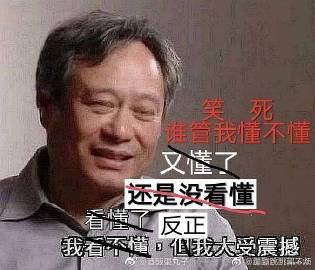
好滴,到此处为止。我们已经大概的了解kotlin协程中异常是如何抛出的,下面我们就不再不过多延伸。下面我们来说说异常的处理。
协程的异常处理
kotlin协程异常处理我们要分成两部分来看,通过上面的分解我们知道一种异常是通过resumeWithException抛出的,还有一种异常是直接通过CoroutineExceptionHandler抛出,那么我们现在就开始讲讲如何处理异常。
第一种:当然就是我们最常用的try..catch大法啦,只要有异常崩溃我就先try..catch下,先不管流程对不对,我先保住我的程序不能崩溃。

private fun testException(){
GlobalScope.launch{
launch(start = CoroutineStart.UNDISPATCHED) {
Log.d("${Thread.currentThread().name}", " 我要开始抛异常了")
try {
throw NullPointerException("异常测试")
} catch (e: Exception) {
e.printStackTrace()
}
}
Log.d("${Thread.currentThread().name}", "end")
}
}
D/DefaultDispatcher-worker-1: 我要开始抛异常了
W/System.err: java.lang.NullPointerException: 异常测试
W/System.err: at com.carman.kotlin.coroutine.MainActivity$testException$1$1.invokeSuspend(MainActivity.kt:252)
W/System.err: at com.carman.kotlin.coroutine.MainActivity$testException$1$1.invoke(Unknown
//省略...
D/DefaultDispatcher-worker-1: end
诶嘿,这个时候我们程序没有崩溃,只是输出了警告日志而已。那如果遇到try..catch搞不定的怎么办,或者遗漏了需要try..catch的位置怎么办。比如:
private fun testException(){
var a:MutableList<Int> = mutableListOf(1,2,3)
GlobalScope.launch{
launch {
Log.d("${Thread.currentThread().name}","我要开始抛异常了" )
try {
launch{
Log.d("${Thread.currentThread().name}", "${a[1]}")
}
a.clear()
} catch (e: Exception) {
e.printStackTrace()
}
}
Log.d("${Thread.currentThread().name}", "end")
}
}
D/DefaultDispatcher-worker-1: end
D/DefaultDispatcher-worker-2: 我要开始抛异常了
E/AndroidRuntime: FATAL EXCEPTION: DefaultDispatcher-worker-2
Process: com.carman.kotlin.coroutine, PID: 5394
java.lang.IndexOutOfBoundsException: Index: 1, Size: 0
at java.util.ArrayList.get(ArrayList.java:437)
at com.carman.kotlin.coroutine.MainActivity$testException$1$1$1.invokeSuspend(MainActivity.kt:252)
at kotlin.coroutines.jvm.internal.BaseContinuationImpl.resumeWith(ContinuationImpl.kt:33)
at kotlinx.coroutines.DispatchedTask.run(DispatchedTask.kt:106)
at kotlinx.coroutines.scheduling.CoroutineScheduler.runSafely(CoroutineScheduler.kt:571)
at kotlinx.coroutines.scheduling.CoroutineScheduler$Worker.executeTask(CoroutineScheduler.kt:750)
at kotlinx.coroutines.scheduling.CoroutineScheduler$Worker.runWorker(CoroutineScheduler.kt:678)
at kotlinx.coroutines.scheduling.CoroutineScheduler$Worker.run(CoroutineScheduler.kt:665)

当你以为使用try..catch就能捕获的时候,然而实际并没有。这是因为我们的try..catch使用方式不对,我们必须在使用a[1]时候再用try..catch捕获才行。那就有人会想那我每次都记得使用try..catch就好了。
是,当然没问题。但是你能保证你每次都能记住吗,你的同一战壕里的战友会记住吗。而且当你的逻辑比较复杂的时候,你使用那么多try..catch你代码阅读性是不是降低了很多后,你还能记住哪里有可能会出现异常吗。

这个时候就需要使用协程上下文中的CoroutineExceptionHandler。我们在上一篇文章讲解协程上下文的时候提到过,它是协程上下文中的一个Element,是用来捕获协程中未处理的异常。
public interface CoroutineExceptionHandler : CoroutineContext.Element {
public companion object Key : CoroutineContext.Key<CoroutineExceptionHandler>
public fun handleException(context: CoroutineContext, exception: Throwable)
}
我们稍作修改:
private fun testException(){
val exceptionHandler = CoroutineExceptionHandler { coroutineContext, throwable ->
Log.d("exceptionHandler", "${coroutineContext[CoroutineName]} :$throwable")
}
GlobalScope.launch(CoroutineName("异常处理") + exceptionHandler){
val job = launch{
Log.d("${Thread.currentThread().name}","我要开始抛异常了" )
throw NullPointerException("异常测试")
}
Log.d("${Thread.currentThread().name}", "end")
}
}
D/DefaultDispatcher-worker-1: 我要开始抛异常了
D/exceptionHandler: CoroutineName(异常处理) :java.lang.NullPointerException: 异常测试
D/DefaultDispatcher-worker-2: end
这个时候即使我们没有使用try..catch去捕获异常,但是异常还是被我们捕获处理了。是不是感觉异常处理也没有那么难。那如果按照上面的写,我们是不是得在每次启动协程的时候,也需要跟try..catch一样都需要加上一个CoroutineExceptionHandler呢? 这个时候我们就看出来,各位是否真的有吸收前面讲解的知识:
-
第一种:我们上面讲解的
协程作用域部分你已经消化吸收,那么恭喜你接下来的你可以大概的过一遍或者选择跳过了。因为接下来的部分和协程作用域中说到的内容大体一致。 -
第二种:除第一种的,都是第二种。那你接下来你就得认证仔细的看了。
我们之前在讲到协同作用域和主从(监督)作用域的时候提到过,异常传递的问题。我们先来看看协同作用域:
协同作用域如果子协程抛出未捕获的异常时,会将异常传递给父协程处理,如果父协程被取消,则所有子协程同时也会被取消。
容我盗个官方图
默认情况下,当协程因出现异常失败时,它会将异常传播到它的父级,父级会取消其余的子协程,同时取消自身的执行。最后将异常在传播给它的父级。当异常到达当前层次结构的根,在当前协程作用域启动的所有协程都将被取消。
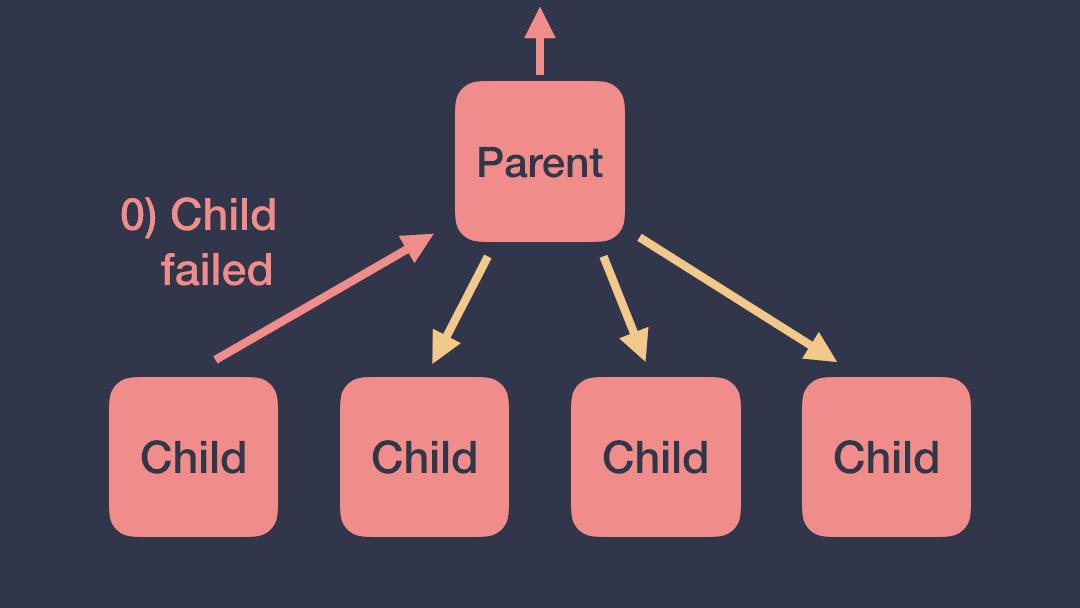
我们在前一个案例的基础上稍作做一下修改,只在父协程上添加CoroutineExceptionHandler,照例上代码:
private fun testException(){
val exceptionHandler = CoroutineExceptionHandler { coroutineContext, throwable ->
Log.d("exceptionHandler", "${coroutineContext[CoroutineName]} 处理异常 :$throwable")
}
GlobalScope.launch(CoroutineName("父协程") + exceptionHandler){
val job = launch(CoroutineName("子协程")) {
Log.d("${Thread.currentThread().name}","我要开始抛异常了" )
for (index in 0..10){
launch(CoroutineName("孙子协程$index")) {
Log.d("${Thread.currentThread().name}","${coroutineContext[CoroutineName]}" )
}
}
throw NullPointerException("空指针异常")
}
for (index in 0..10){
launch(CoroutineName("子协程$index")) {
Log.d("${Thread.currentThread().name}","${coroutineContext[CoroutineName]}" )
}
}
try {
job.join()
} catch (e: Exception) {
e.printStackTrace()
}
Log.d("${Thread.currentThread().name}", "end")
}
}
D/DefaultDispatcher-worker-3: 我要开始抛异常了
W/System.err: kotlinx.coroutines.JobCancellationException: StandaloneCoroutine is cancelling; job=StandaloneCoroutine{Cancelling}@f6b7807
W/System.err: Caused by: java.lang.NullPointerException: 空指针异常
W/System.err: at com.carman.kotlin.coroutine.MainActivity$testException$1$job$1.invokeSuspend(MainActivity.kt:26//省略...
D/DefaultDispatcher-worker-6: end
D/exceptionHandler: CoroutineName(父协程) 处理异常 :java.lang.NullPointerException: 空指针异常
我们看到子协程job的异常被父协程处理了,无论我下面开启多少个子协程产生异常,最终都是被父协程处理。但是有个问题是:因为异常会导致父协程被取消执行,同时导致后续的所有子协程都没有执行完成(可能偶尔有个别会执行完)。那可能就会是有人问了,这种做法的意义和应用场景是什么呢?

如果有一个页面,它最终展示的数据,是通过请求多个服务器接口的数据拼接而成的,而其中某一个接口出问题都将不进行数据展示,而是提示加载失败。那么你就可以使用上面的方案去做,都不用管它们是谁报的错,反正都是统一处理,一劳永逸。类似这样的例子我们在开发中应该经常遇到。

但是另外一个问题就来了。例如我们APP的首页,首页上展示的数据五花八门。如:广告,弹窗,未读状态,列表数据等等都在首页存在,但是他们相互之间互不干扰又不关联,即使其中某一个失败了也不影响其他数据展示。那通过上面的方案,我们就没办法处理。
这个时候我们就可以通过主从(监督)作用域的方式去实现,与协同作用域一致,区别在于该作用域下的协程取消操作的单向传播性,子协程的异常不会导致其它子协程取消。我再盗个官方图:

我们在讲解主从(监督)作用域的时候提到过,要实现主从(监督)作用域需要使用supervisorScope或者SupervisorJob。这里我们需要补充一下,我们在使用supervisorScope其实用的就是SupervisorJob。 这也是为什么使用supervisorScope与使用SupervisorJob协程处理是一样的效果。
/**
* 省略...
* but overrides context's [Job] with [SupervisorJob].
* 省略...
*/
public suspend fun <R> supervisorScope(block: suspend CoroutineScope.() -> R): R {
//省略...
}
这段是摘自官方文档的,其他的我把它们省略了,只留了一句:“SupervisorJob会覆盖上下文中的Job”。这也就说明我们在使用supervisorScope的就是使用的SupervisorJob。我们先用supervisorScope实现以下我们上面提到的案例:
private fun testException(){
val exceptionHandler = CoroutineExceptionHandler { coroutineContext, throwable ->
Log.d("exceptionHandler", "${coroutineContext[CoroutineName].toString()} 处理异常 :$throwable")
}
GlobalScope.launch(exceptionHandler) {
supervisorScope {
launch(CoroutineName("异常子协程")) {
Log.d("${Thread.currentThread().name}", "我要开始抛异常了")
throw NullPointerException("空指针异常")
}
for (index in 0..10) {
launch(CoroutineName("子协程$index")) {
Log.d("${Thread.currentThread().name}正常执行", "$index")
if (index %3 == 0){
throw NullPointerException("子协程${index}空指针异常")
}
}
}
}
}
}
D/DefaultDispatcher-worker-1: 我要开始抛异常了
D/exceptionHandler: CoroutineName(异常子协程) 处理异常 :java.lang.NullPointerException: 空指针异常
D/DefaultDispatcher-worker-1正常执行: 1
D/DefaultDispatcher-worker-1正常执行: 2
D/DefaultDispatcher-worker-3正常执行: 0
D/DefaultDispatcher-worker-1正常执行: 3
D/exceptionHandler: CoroutineName(子协程0) 处理异常 :java.lang.NullPointerException: 子协程0空指针异常
D/exceptionHandler: CoroutineName(子协程3) 处理异常 :java.lang.NullPointerException: 子协程3空指针异常
D/DefaultDispatcher-worker-4正常执行: 4
D/DefaultDispatcher-worker-4正常执行: 5
D/DefaultDispatcher-worker-5正常执行: 7
D/DefaultDispatcher-worker-3正常执行: 6
D/DefaultDispatcher-worker-5正常执行: 8
D/DefaultDispatcher-worker-5正常执行: 9
D/exceptionHandler: CoroutineName(子协程9) 处理异常 :java.lang.NullPointerException: 子协程9空指针异常
D/exceptionHandler: CoroutineName(子协程6) 处理异常 :java.lang.NullPointerException: 子协程6空指针异常
D/DefaultDispatcher-worker-2正常执行: 10
可以看到即使当中有多个协程都出现问题,我们还是能够让所有的子协程执行完成。这个时候我们用这样方案是不是就可以解决,我们首页多种数据互不干扰的刷新问题了,同也能够在出现异常的时候统一处理。
那我们在用SupervisorJob实现一遍,看看是不是和supervisorScope一样的,代码奉上:
private fun testException(){
val exceptionHandler = CoroutineExceptionHandler { coroutineContext, throwable ->
Log.d("exceptionHandler", "${coroutineContext[CoroutineName].toString()} 处理异常 :$throwable")
}
val supervisorScope = CoroutineScope(SupervisorJob() + exceptionHandler)
with(supervisorScope) {
launch(CoroutineName("异常子协程")) {
Log.d("${Thread.currentThread().name}", "我要开始抛异常了")
throw NullPointerException("空指针异常")
}
for (index in 0..10) {
launch(CoroutineName("子协程$index")) {
Log.d("${Thread.currentThread().name}正常执行", "$index")
if (index % 3 == 0) {
throw NullPointerException("子协程${index}空指针异常")
}
}
}
}
可以看到我们通过CoroutineScope创建一个SupervisorJob的supervisorScope,然后再通过with(supervisorScope)是不是就变得跟直接使用supervisorScope一样了。
D/DefaultDispatcher-worker-1: 我要开始抛异常了
D/DefaultDispatcher-worker-2正常执行: 0
D/exceptionHandler: CoroutineName(子协程0) 处理异常 :java.lang.NullPointerException: 子协程0空指针异常
D/exceptionHandler: CoroutineName(异常子协程) 处理异常 :java.lang.NullPointerException: 空指针异常
D/DefaultDispatcher-worker-2正常执行: 1
D/DefaultDispatcher-worker-2正常执行: 2
D/DefaultDispatcher-worker-4正常执行: 3
D/exceptionHandler: CoroutineName(子协程3) 处理异常 :java.lang.NullPointerException: 子协程3空指针异常
D/DefaultDispatcher-worker-1正常执行: 4
D/DefaultDispatcher-worker-4正常执行: 5
D/DefaultDispatcher-worker-4正常执行: 6
D/exceptionHandler: CoroutineName(子协程6) 处理异常 :java.lang.NullPointerException: 子协程6空指针异常
D/DefaultDispatcher-worker-4正常执行: 8
D/DefaultDispatcher-worker-3正常执行: 7
D/DefaultDispatcher-worker-2正常执行: 9
D/exceptionHandler: CoroutineName(子协程9) 处理异常 :java.lang.NullPointerException: 子协程9空指针异常
D/DefaultDispatcher-worker-3正常执行: 10
当然,我们在使用协程的时候,可能某个协程需要自己处理自己的异常,这个时候只需要在这个协程的上下文中添加CoroutineExceptionHandler即可。毕竟按需使用,谁也不知道产品又会有什么奇怪的想法。
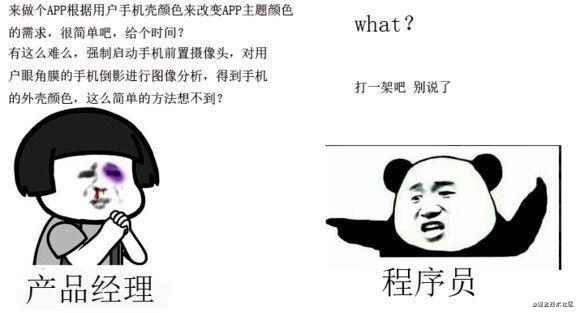
好了,到现在我们也基本的知道协程中的异常产生流程,和按需处理协程中的异常问题。如果您还有什么不清楚的地方,可以自己动手实验一下或者在下方留言、私信笔者等方式,我会在看到消息的第一时间处理。
预告以及意见收集
在下一章节中,我们将会进入到实际的Android开发中,我们会先构建一个基础APP的框架,封装一些常用的协程方法和请求方式,至于具体的实战项目类型,我想征求一下大家的意见,然后根据反馈的实际情况再来决定,欢迎大家踊跃的提出意见。
最后:祝愿大家都能写出完美的BUG,让测试都无法找到BUG所在。
如果你想学习kotlin又缺少学习资料,我正好薅到这本谷歌内部大佬根据实战编写的Kotlin宝典,从入门到精通,教程通俗易懂,实例丰富,既有基础知识,也有进阶技能,能够帮助读者快速入门,是你学习Kotlin的葵花宝典,快收藏起来!!!

今天分享的一共分为两部分:【字节跳动厂内部超高质量Kotlin笔记】、【谷歌大佬编写高级Kotlin强化实战(附Demo)】。
一、字节跳动厂内部超高质量Kotlin笔记
首先目录乘上:

1.准备开始
主要内容:基本语法、习惯用语、编码风格
2.基础
主要内容:基本类型、包、控制流、返回与跳转

3.类和对象
主要内容:类和继承、属性和字段、接口、可见性修饰词、扩展、数据对象、泛型、嵌套类、枚举类、对象表达式和声明、代理模式、代理属性
4.函数和lambda表达式
主要内容:函数、高阶函数与 lambda 表达式
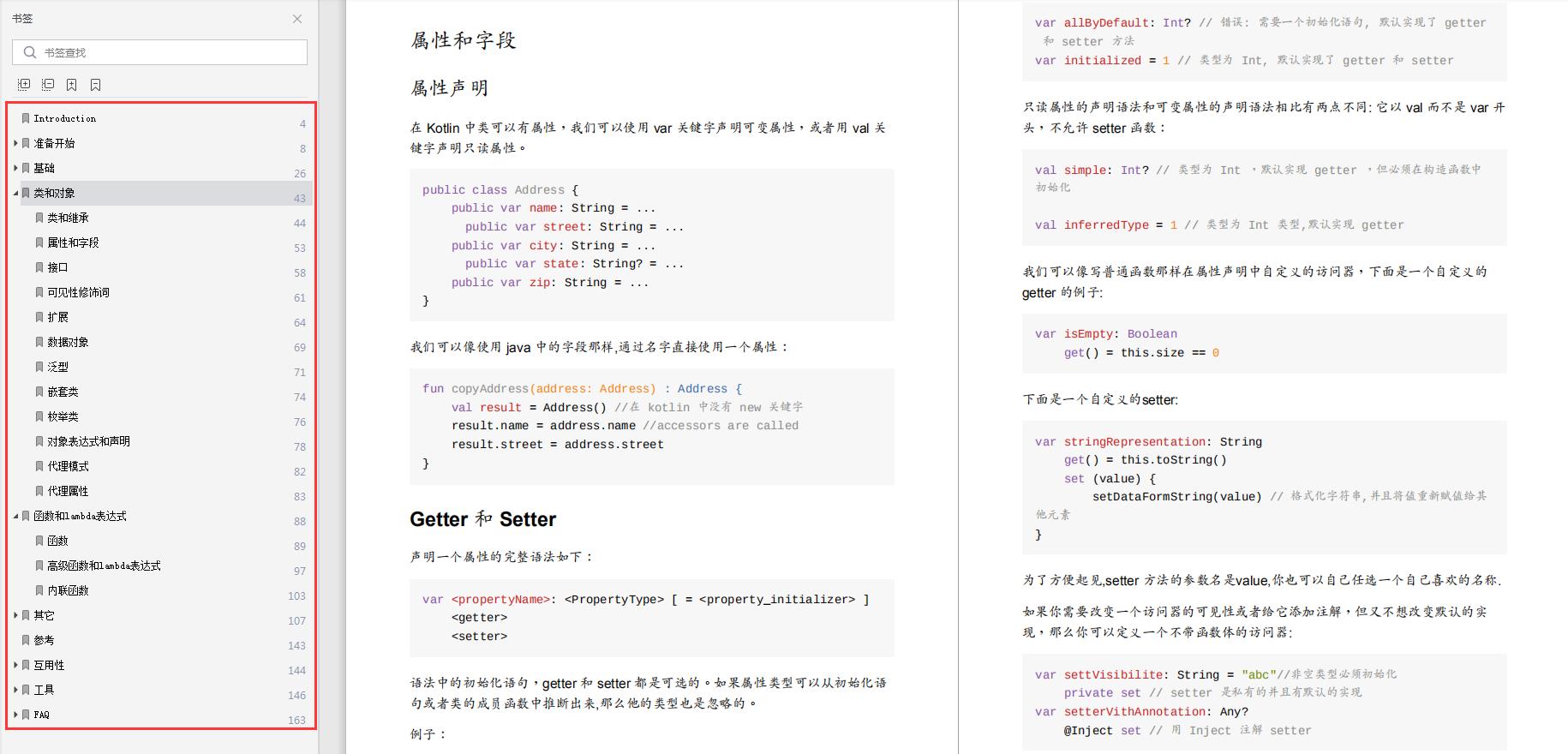
5.其它
主要内容:多重申明,Ranges,类型检查和自动转换,This表达式,等式,运算符重载,空安全,异常,注解,反射,动态类型
6.互用性
主要内容:动态类型

7.工具
主要内容:使用Maven、使用 Ant、使用 Gradle、使用Griffon
8.FAQ
主要内容:与java对比、与Scala对比
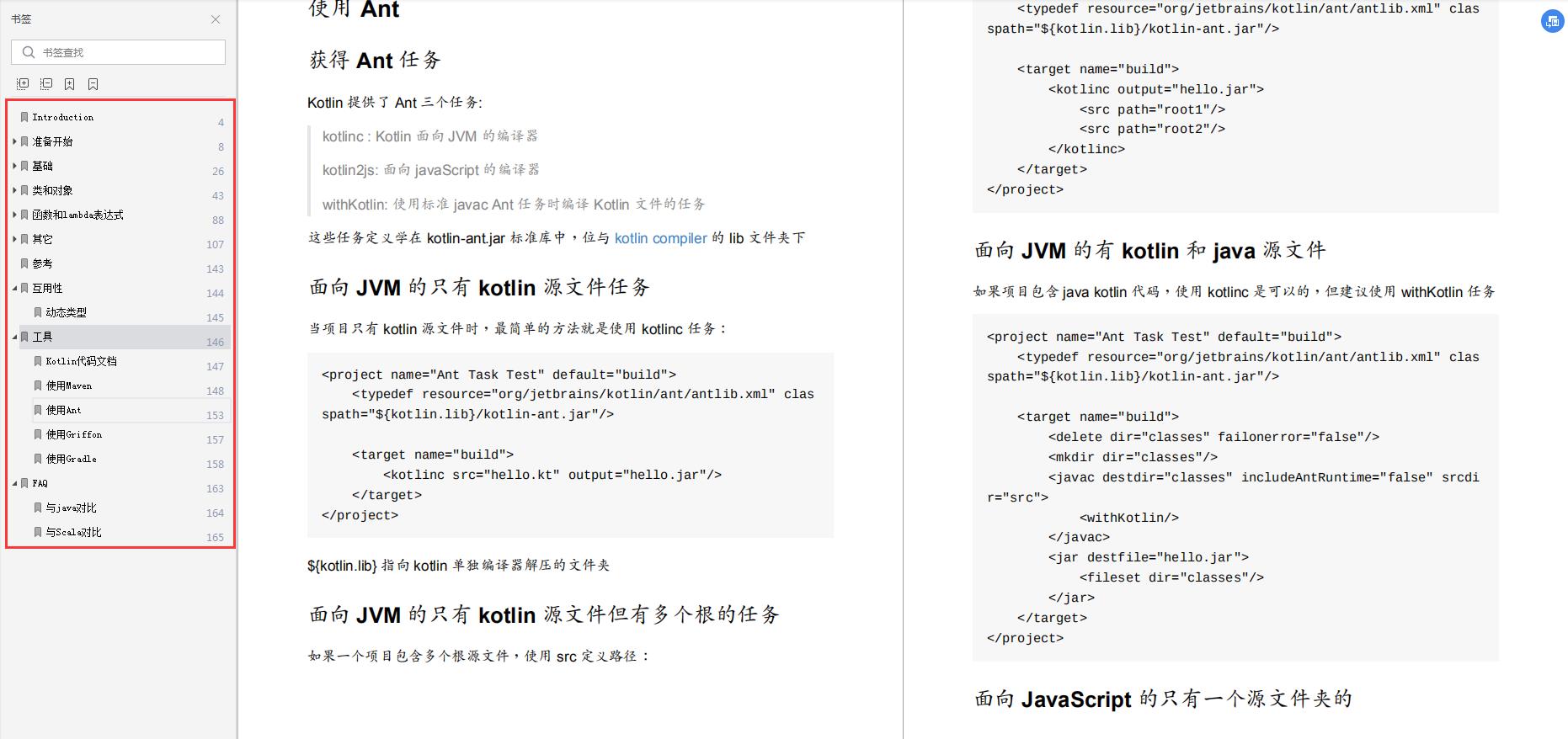
基础知识掌握之后就是靠实战提升了!
二、谷歌大佬编写高级Kotlin强化实战(附Demo)
照样目录乘上:

第一章 Kotlin入门教程
- Kotlin 概述
- Kotlin 与 Java 比较
- 巧用 Android Studio
- 认识 Kotlin 基本类型
- 走进 Kotlin 的数组
- 走进 Kotlin 的集合
- 集合问题
- 完整代码
- 基础语法

第二章 Kotlin 实战避坑指南
- 方法入参是常量,不可修改
- 不要 Companion 、INSTANCE ?
- Java 重载,在 Kotlin 中怎么巧妙过渡一下?
- Kotlin 中的判空姿势
- Kotlin 复写 Java 父类中的方法
- Kotlin “狠”起来,连TODO 都不放过!
- is、as` 中的坑
- Kotlin 中的 Property 的理解
- also 关键字
- takeIf 关键字
- takeIf 关键字
- 单例模式的写法

第三章 项目实战《Kotlin Jetpack 实战》
- 从一个膜拜大神的 Demo 开始
- Kotlin 写 Gradle 脚本是一种什么体验?
- Kotlin 编程的三重境界
- Kotlin 高阶函数
- Kotlin 泛型
- Kotlin 扩展
- Kotlin 委托
- 协程“不为人知”的调试技巧
- 图解协程:suspend

有需要的朋友直接点击此处免费获取完整文档。
以上是关于史上最详Android版kotlin协程入门进阶实战的主要内容,如果未能解决你的问题,请参考以下文章